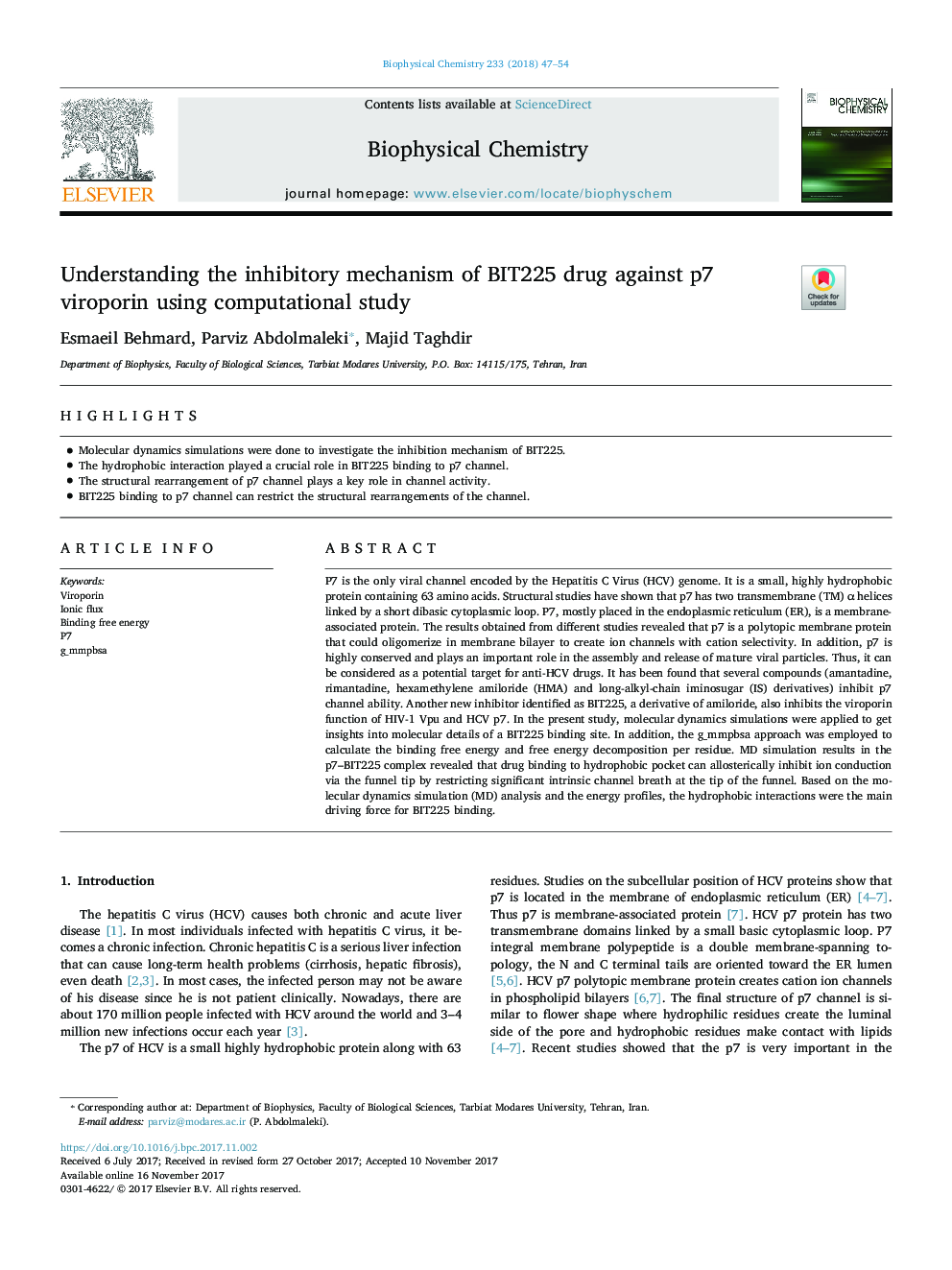| کد مقاله | کد نشریه | سال انتشار | مقاله انگلیسی | نسخه تمام متن |
|---|---|---|---|---|
| 7837008 | 1503887 | 2018 | 8 صفحه PDF | دانلود رایگان |
عنوان انگلیسی مقاله ISI
Understanding the inhibitory mechanism of BIT225 drug against p7 viroporin using computational study
دانلود مقاله + سفارش ترجمه
دانلود مقاله ISI انگلیسی
رایگان برای ایرانیان
موضوعات مرتبط
مهندسی و علوم پایه
شیمی
شیمی تئوریک و عملی
پیش نمایش صفحه اول مقاله

چکیده انگلیسی
P7 is the only viral channel encoded by the Hepatitis C Virus (HCV) genome. It is a small, highly hydrophobic protein containing 63 amino acids. Structural studies have shown that p7 has two transmembrane (TM) α helices linked by a short dibasic cytoplasmic loop. P7, mostly placed in the endoplasmic reticulum (ER), is a membrane-associated protein. The results obtained from different studies revealed that p7 is a polytopic membrane protein that could oligomerize in membrane bilayer to create ion channels with cation selectivity. In addition, p7 is highly conserved and plays an important role in the assembly and release of mature viral particles. Thus, it can be considered as a potential target for anti-HCV drugs. It has been found that several compounds (amantadine, rimantadine, hexamethylene amiloride (HMA) and long-alkyl-chain iminosugar (IS) derivatives) inhibit p7 channel ability. Another new inhibitor identified as BIT225, a derivative of amiloride, also inhibits the viroporin function of HIV-1 Vpu and HCV p7. In the present study, molecular dynamics simulations were applied to get insights into molecular details of a BIT225 binding site. In addition, the g_mmpbsa approach was employed to calculate the binding free energy and free energy decomposition per residue. MD simulation results in the p7-BIT225 complex revealed that drug binding to hydrophobic pocket can allosterically inhibit ion conduction via the funnel tip by restricting significant intrinsic channel breath at the tip of the funnel. Based on the molecular dynamics simulation (MD) analysis and the energy profiles, the hydrophobic interactions were the main driving force for BIT225 binding.
ناشر
Database: Elsevier - ScienceDirect (ساینس دایرکت)
Journal: Biophysical Chemistry - Volume 233, February 2018, Pages 47-54
Journal: Biophysical Chemistry - Volume 233, February 2018, Pages 47-54
نویسندگان
Esmaeil Behmard, Parviz Abdolmaleki, Majid Taghdir,